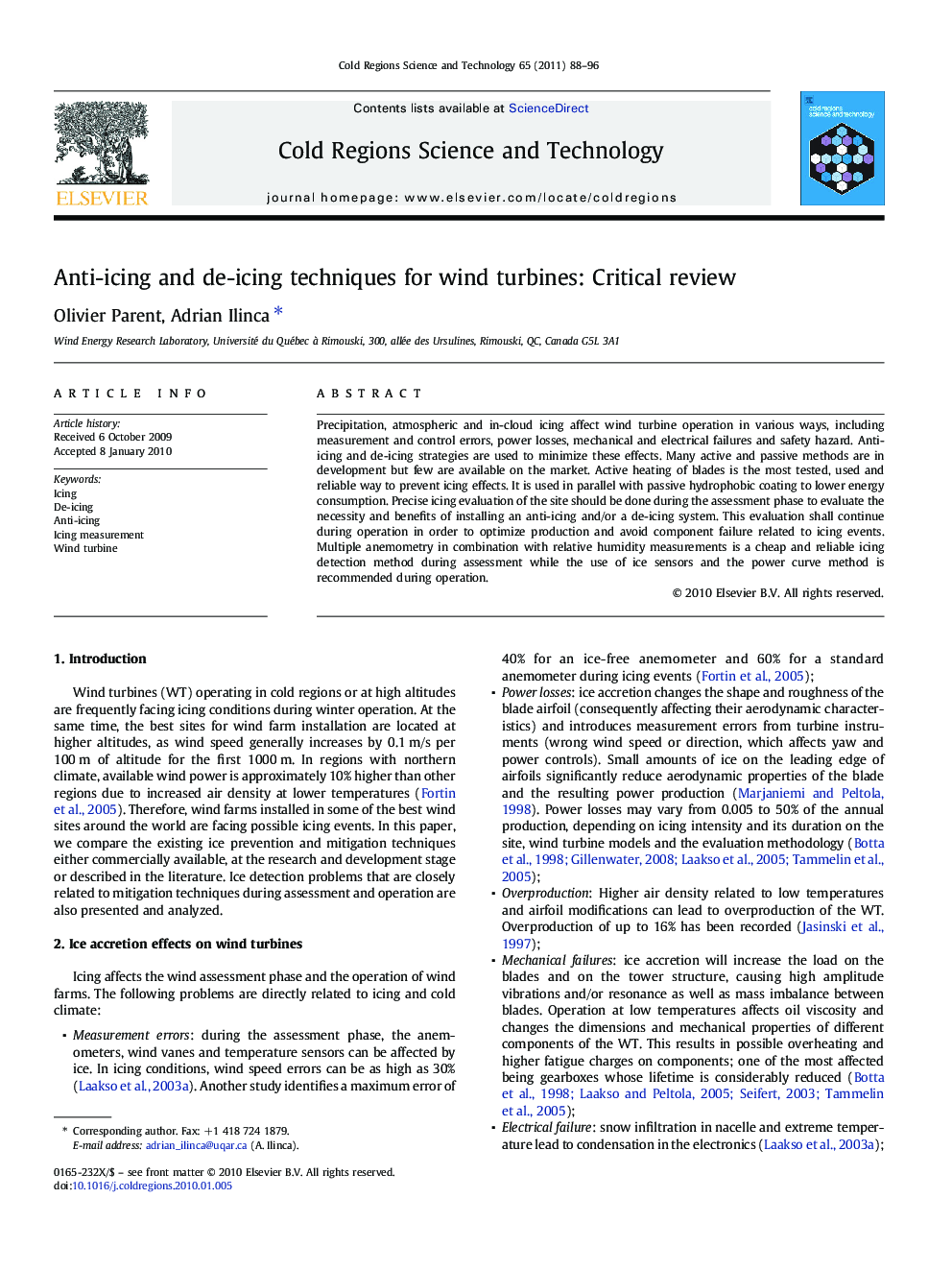| Article ID | Journal | Published Year | Pages | File Type |
|---|---|---|---|---|
| 4676090 | Cold Regions Science and Technology | 2011 | 9 Pages |
Precipitation, atmospheric and in-cloud icing affect wind turbine operation in various ways, including measurement and control errors, power losses, mechanical and electrical failures and safety hazard. Anti-icing and de-icing strategies are used to minimize these effects. Many active and passive methods are in development but few are available on the market. Active heating of blades is the most tested, used and reliable way to prevent icing effects. It is used in parallel with passive hydrophobic coating to lower energy consumption. Precise icing evaluation of the site should be done during the assessment phase to evaluate the necessity and benefits of installing an anti-icing and/or a de-icing system. This evaluation shall continue during operation in order to optimize production and avoid component failure related to icing events. Multiple anemometry in combination with relative humidity measurements is a cheap and reliable icing detection method during assessment while the use of ice sensors and the power curve method is recommended during operation.
